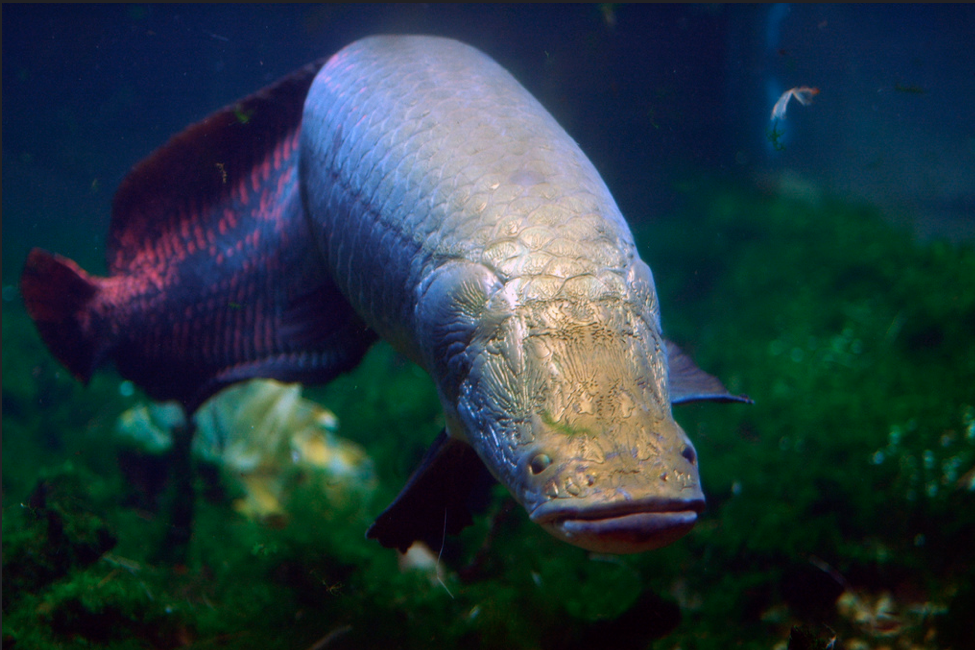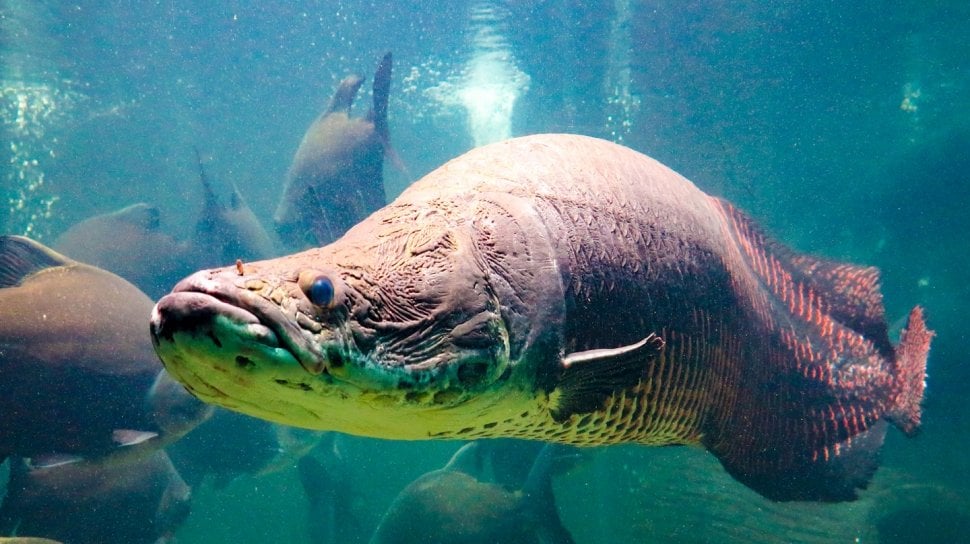According to a reporter from the Vietnam News Agency in South America, the fish in the above study is Pirarucu (scientific name Arapaima gigas), one of the largest freshwater fish in the world with a body length that can reach 3 to 4.5 meters and a weight of about 200 kg, lives in the Amazon River region of Brazil, Guyana and Peru.

Pirarucu fish in a river in Manaus, Amazonas state, Brazil.Photo
Monitoring by scientists shows that the scales of Pirarucu fish can be deformed but are not scratched or torn when attacked by predatory fish Piranha, a small fish species but possessing sharp teeth with sharp teeth. The bite force is said to be three times stronger than that of an American alligator.Scientists at the University of California have discovered that the inner layer of Pirarucu fish scales is hard but very flexible and is attached by collagen to an outer layer of mineralization. The article also explains that other fish use collagen in a similar way to Pirarucu, but the collagen layers in this giant fish’s scales are thicker than those of any other species, equivalent to the thickness of a grain of rice.

Fishermen catch Pirarucu fish in Amazonas state, Brazil. Photo

The properties of Pirarucu fish scales have attracted the attention of engineers in the armor and synthetic armor manufacturing industry, which has previously been used to produce bulletproof vests with many layers of flexible fibers placed between plastic sheets. hard. The article states that fish scales are very effective natural armor to protect themselves from predators without hindering their flexibility.

Therefore, imitating those structures in engineering could help create better and lighter materials for armor production.Robert Ritchie, a materials scientist and main author of the above scientific research, added that while human-made armor plates must use a third material. As an adhesive, the layers of fish scales are connected at the level of atoms and grow together to weave a single solid mass with flexibility. In this case, mineralized collagen is the structure that binds the hard and soft material layers together.




